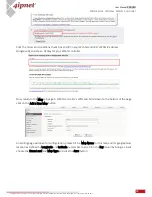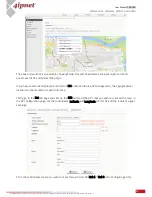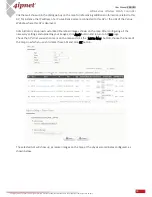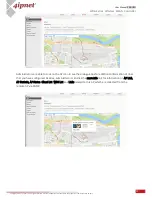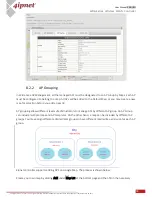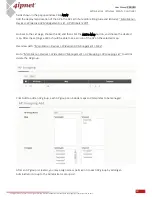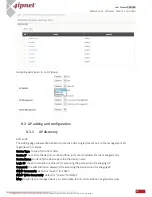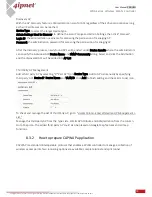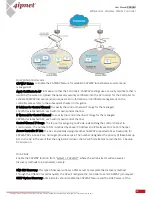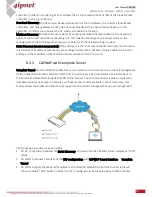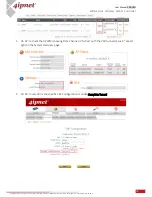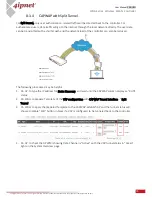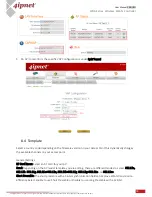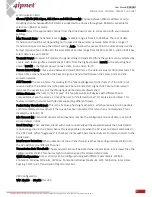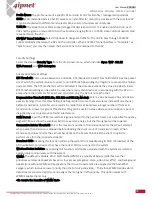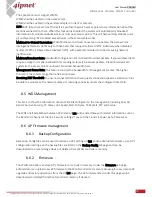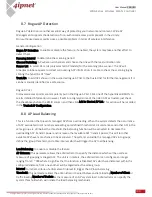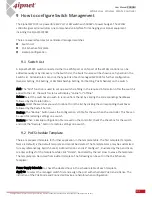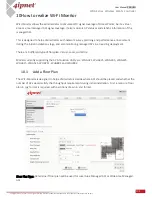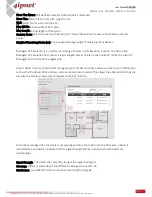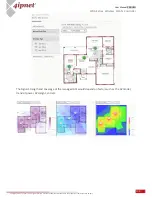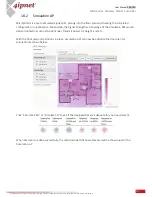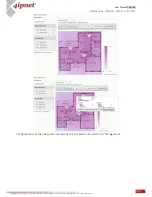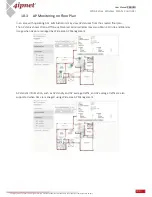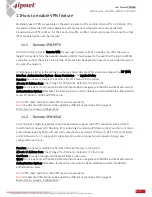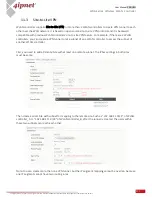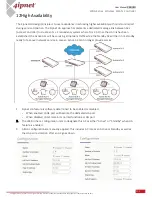
98
User Manual ENGLISH
WHG-Series Wireless WLAN Controller
Copyright © 2017, 4ipnet, Inc. All rights reserved. All other trademarks mentioned are the property of their respective owners.
Profile Name: The profile name of a specific RF card and its VAP for identity / management purposes.
ESSID: ESSID (Extended Service Set ID) serves as an identifier for clients to associate with the specific VAP.
It can be coupled with different service levels like a variety of wireless security types.
VLAN ID: The 4ipnet Access Point supports tagged VLANs (virtual LANs). To enable VLAN function, each
VAP shall be given a unique VLAN ID with valid values ranging from 1 to 4094. Once VLAN is Enabled, QoS
is supported on the VAP.
CAPWAP Tunnel Interface: Select dropdown to designate traffic for the VAP to pass through CAPWAP
Tunnel established between the AP and the controller. When CAPWAP Tunnel Interface is “Complete” or
“Split Tunnel”, you may then select the Service Zone to be mapped to this VAP.
Security Settings
Select the desired Security Type from the drop-down menu, which includes Open, WEP, 802.1X,
WPA-Personal, and WPA-Enterprise.
Advanced Wireless Settings
RTS Threshold: Enter a value between 1 and 2346. RTS (Request to Send) Threshold determines the packet
size at which the system issues a request to send (RTS) before sending the fragment to prevent the hidden
node problem. The RTS mechanism will be activated if the data size exceeds the value provided
.
A lower
RTS Threshold setting can be useful in areas where many client devices are associating with the AP or in
areas where the clients are far apart and can detect only the AP but not each other.
Fragmentation Threshold (802.11a, 802.11b and 802.11g Modes): Enter a value between 256 and 2346. A
packet size larger than this threshold will be fragmented (sent with several pieces instead of one chunk)
before transmission. A smaller value results in smaller frames but allows a larger number of frames in
transmission. A lower Fragment Threshold setting can be useful in areas where communication is poor or
disturbed by a serious amount of radio interference.
DTIM Period: Input the DTIM Interval that is generated within the periodic beacon at a specified frequency.
Higher DTIM will allow the wireless client to save more energy, but the throughput will be lowered.
Consecutive Retries Threshold: This is the maximum number of transmission retries the AP will attempt
when packet transmission is dropped before deciding the client is out of transmission reach. When
transmission retries fails for the set number of times, the Access Point kicks the client to optimize
performance for other connected clients.
Broadcast SSID: Disabling this function will stop the system from broadcasting its SSID. If broadcast of the
SSID is disabled, only devices that have the correct SSID can connect to the system.
Wireless Station Isolation: By enabling this function, all stations associated with the system are isolated
and can only communicate with the system.
WMM: The default is
Disable.
Wi-Fi Multimedia (WMM) is a Quality of Service (QoS) feature that
prioritizes wireless data packets based on four access categories: voice, video, best effort, and background.
Applications without WMM and applications that do not require QoS are assigned to the best-effort
category, which receives a lower priority than that of voice and video. Therefore, WMM decides which
data streams are more important and assigns them a higher traffic priority. This option works with
WMM-capable clients only.
<To receive the benefits of WMM QoS>

